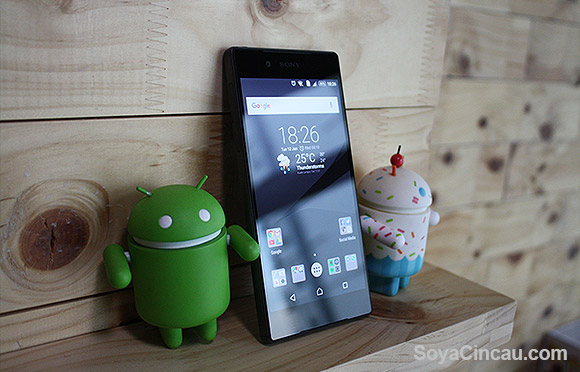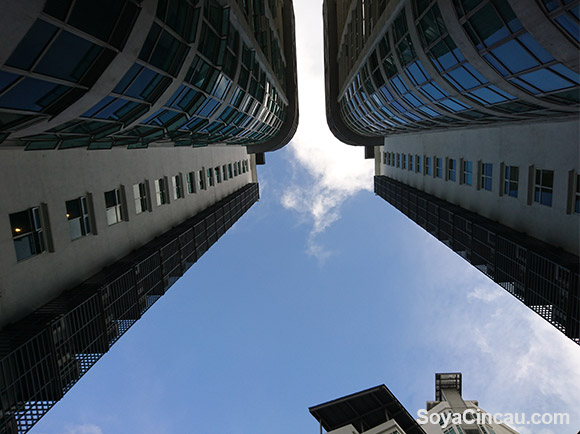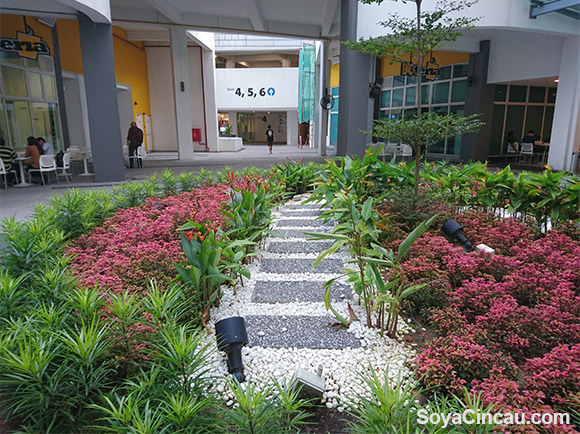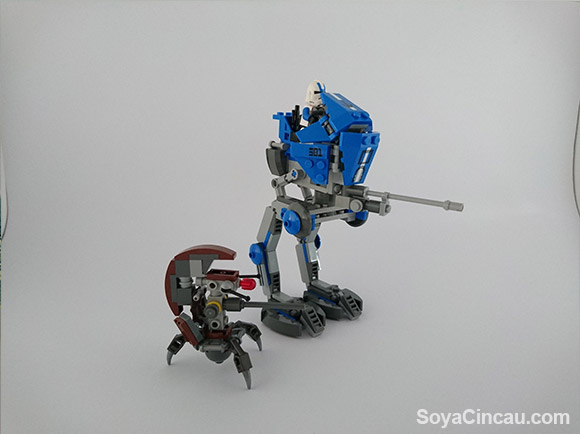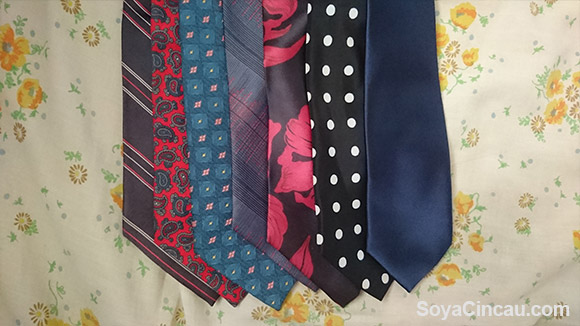Competing in a market with Apple and Samsung is definitely tough to do, more so when you have affordable Chinese brands chipping away at your market share. You have to juggle between innovating, designing, marketing and setting price points. So far, Sony has been on the short end of the stick but they were once in a very different position.
This Japanese company used to be offer different designs and qualities in their smartphones. They once tried different things and were daring enough to explore angles that others didn’t. We had the CyberShot and Walkman lines from the Sony Ericsson days. Then on after restructuring to be “Sony” they came up with their first device, the Xperia S as well as the Xperia Ion, their first 4G LTE smartphone.
Change is necessary if they want to be competitive
Moving with the times, their competitors have shaken up their own brands.
Samsung has started to ditch plastic-backed smartphones, now instead making use of more metal and glass panels – as seen on their mid-range Galaxy A series.
And as everyone has been noticing, Chinese brands like Xiaomi has begun making metal unibody smartphones. Even using the design on their most affordable device yet – the Redmi 3.
Huawei, the other Chinese brand has refined their methods and designs to great lengths, now putting great specs and better designs to the point of creating the premium Mate S. They also partnered with Google to make the flagship Nexus 6P.
So what about Sony? Read on to find out about the Xperia Z5 Dual.
[nextpage title=”Handsome but dated”]
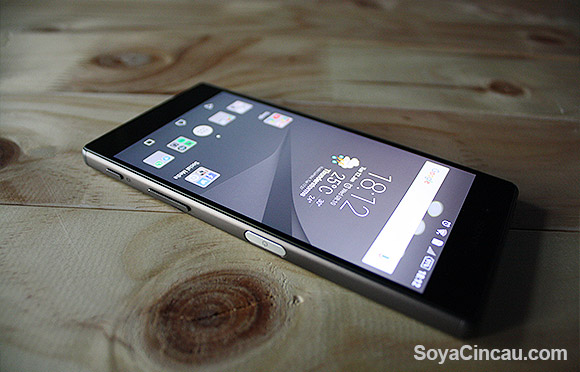
Keeping with the same design over multiple generations has allowed Sony to tweak everything they could, making the Xperia Z5 Dual one of their handsomest devices to date. Looks are subjective so you be the judge if this meets your fancy.
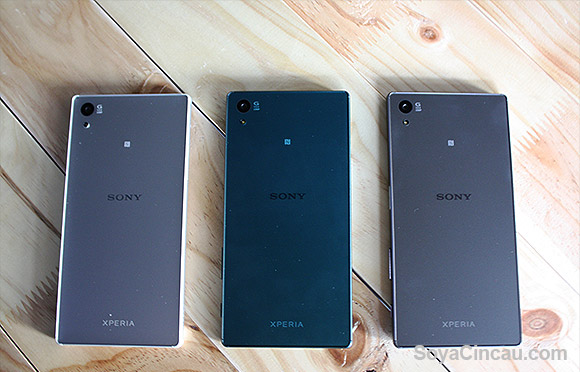
Sharing a design that has been maintained across the entire Xperia Z iterations, the fifth instalment adds a little panache, with the now frosted glass on the back. It adds a feeling of luxury by just adding a different coat.
In the past, you could say that it was a fingerprint magnet, the frosted coating puts that issue to bed, permanently, as we noticed no annoying residue of our grubby extremities on the back. If we had to describe the texture, it’d be close compared to a very smooth surface with little to no drag – personally, very nice feeling.
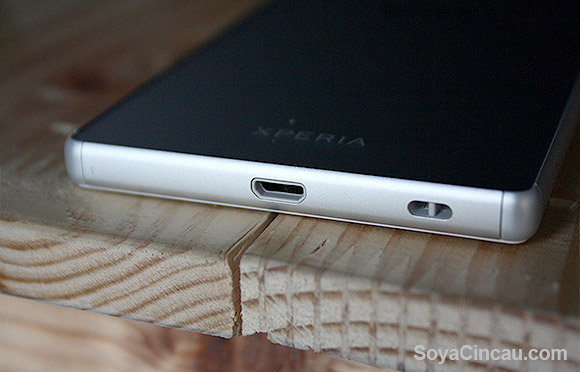
Typically squarish, Sony devices will never be compared aesthetically to most mainstream smartphones and waterproofing has always been a very Sony thing. This time, it’s no different, as the device still maintains an IP68 rating for water and dust resistance. Yet Sony still doesn’t want you submerging your phones underwater.
Seeing Sony smartphones taking the same form over and over again just tells us that their design language is dated – making it tough for those who thirst “innovative” or ground-breaking design – but having said, it’s getting harder differentiating looks on the average smartphone.
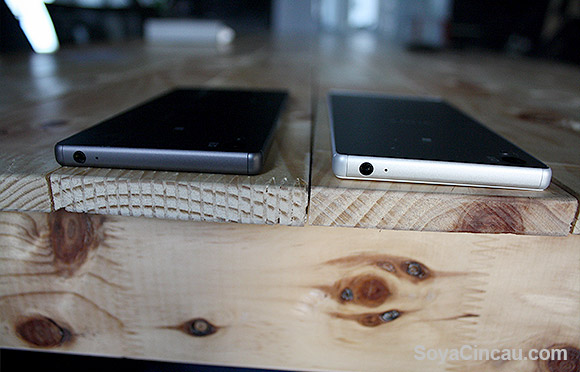
Another issue that has always been a Sony problem is that huge forehead and chin bezels – screen to body ratio at 70.87%.
Other smartphones have a much better ratio with smaller bezels which make them more compact in relation to screen size and overall form factor. Examples would be Galaxy A7 (74.27%), Huawei Mate 8 (78.39%) and the Redmi Note 3 (73.15%).
The Xperia Z5 Dual is relatively thin at 7.3mm, 146mm tall and 72mm wide. Making it slightly thicker than the Xperia Z3+ that had a thickness of 6.9mm.
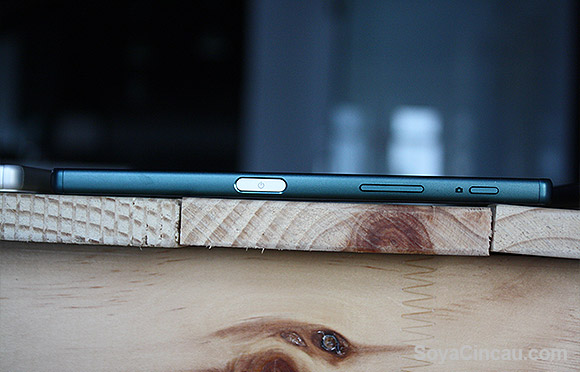
Surrounding the edges of the device is an aluminium unibody frame while 4 tactile buttons are found on the left: power button, volume rockers and dedicated two-stage camera button.
Placement of the power and camera buttons were permitted but we didn’t like how they moved the volume rockers further down, positioning them above the power button would’ve been perfect. Not because we’d accidentally press them but it definitely would improve ergonomics.
That’s our only complaint regarding buttons, otherwise making the recessed power button double as a fingerprint sensor was pretty smart though having it on the side may take some getting used to and the surface area is definitely smaller than the regular rounded ones.
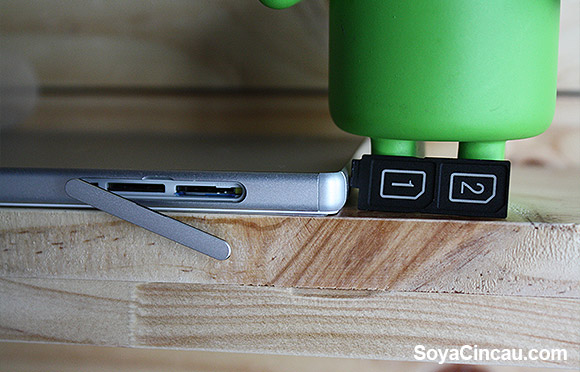
Otherwise, on the top you’ll find the 3.5mm headphone jack accompanied by a microphone; the rear then gets a micro-USB port and an old-school lanyard hole; on the left, you’ll find the capped Dual-SIM and microSD slots.
[nextpage title=”Performance”]
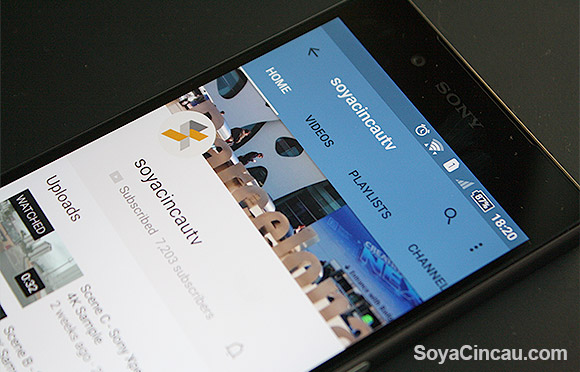
Sony’s Xperia Z5 Dual is by definition the Malcolm in the Middle of the Xperia Z5 line but by no means does it perform like one. The screen is a 5.2-inch Triluminos LCD display that has a Full HD (1920 x 1080) resolution.
Does it deserve a comparison to AMOLED? Well, the colour accuracy is a bit jaded, favouring blues and cooler tones. You can work around that by adjusting the balance in the settings. Sony adds some software display settings too, with the X-Reality and Super-vivid mode making a reappearance; using it will allow you to see subtle differences but as we weren’t too particular we just left it at Super-vivid mode and left it at that.
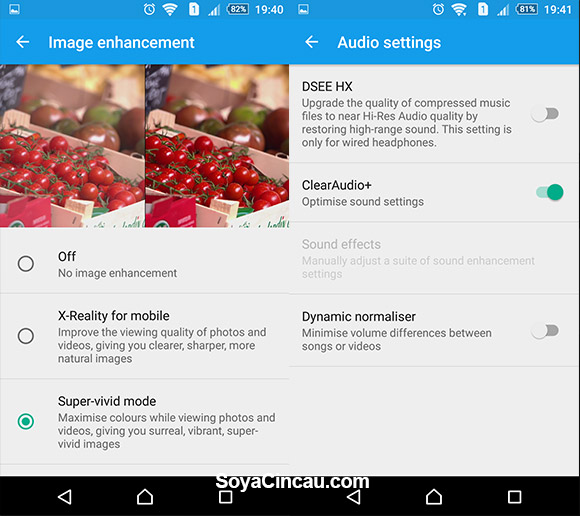
Brightness and readability when outdoors is a non-issue and cranking the display to maximum nits will do justice. When turning the brightness down low, it won’t blind you while being in the dark either so using it while snuggled in bed will be fine.
Dual stereo speakers are sneakily hidden by slits on the top and bottom. Playing with the whole idea of front facing dual speakers, you’re probably going to commend HTC first. BoomSound audio has and still is one of the best audio experiences on a smartphone.
The Sony stacks up decently, it isn’t as crisp but it can get loud. These speakers, when set at max volume, manages to deliver audio without any crackle. That’s great but the two drivers don’t deliver much bass.
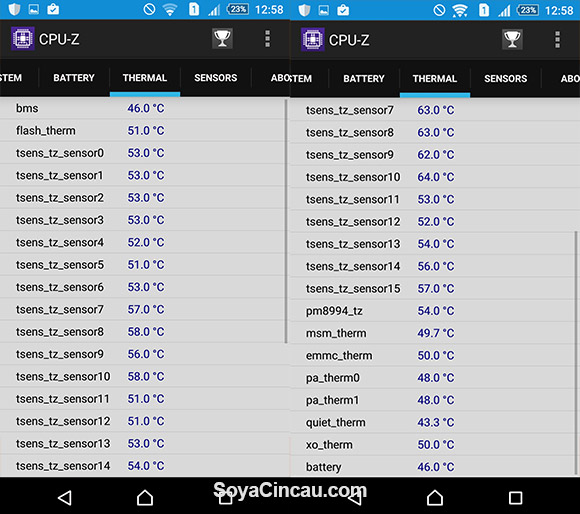
Enough of sensory-driven elements, now to raw power; the Xperia Z5 Dual carries the Qualcomm Snapdragon 810 SoC, a processor that requires no introduction. When you think of the 810 chipset, you instantly think overheating. And you’re not wrong to associate the two after many felt the Xperia Z3+ was considered a hot potato. This thing can get toasty too.
Here’re the hard facts, using it on a daily basis for quite some time, you’ll come to realise that it’ll hit 46-degrees while just multitasking and moving through social media, instant messaging and YouTube. There was even once that it registered 48-degrees – but the thing here is that if apps show the temperature readings hitting those numbers it’s fine – if you can’t feel it.
Unfortunately, you will, as the heat dispersal system directs the heat to the top (we talked about the dual heat-pipes here) of the rear so it doesn’t disperse well. In spite of that, it still won’t fall in the same crazy hot category that the Xperia Z3+ received.
Here are some benchmarks:
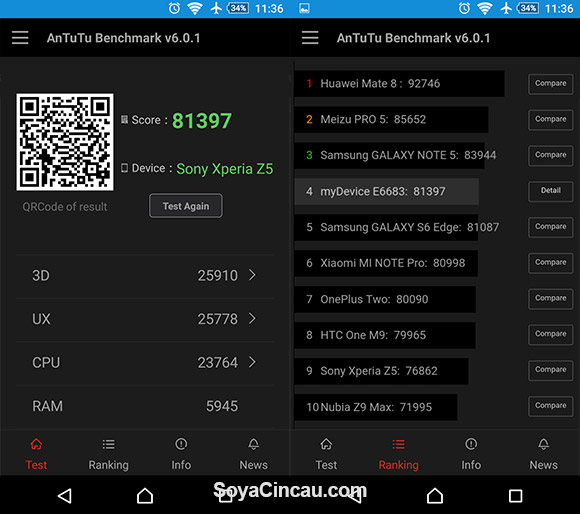
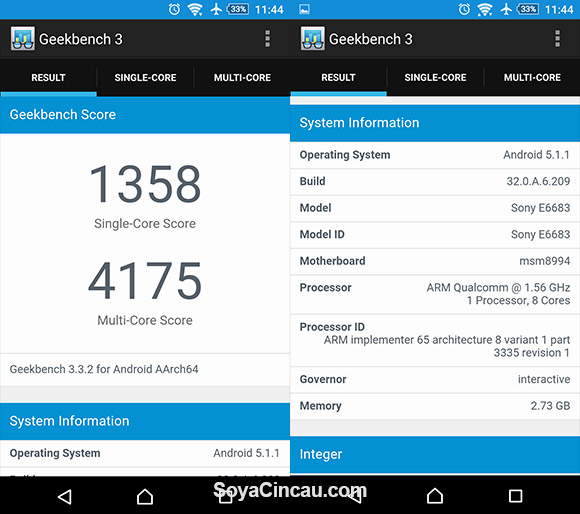
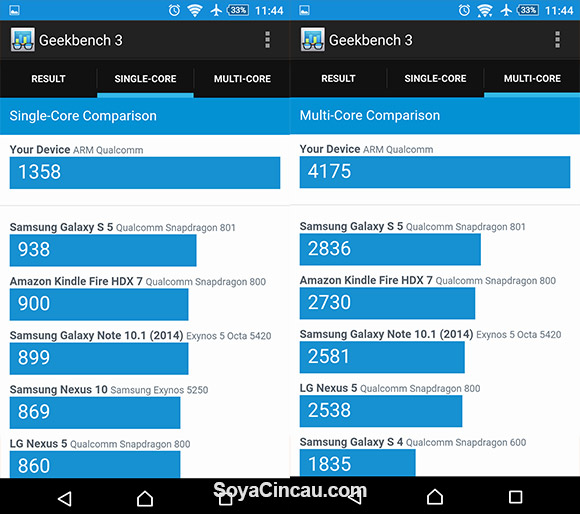
Supporting the processor are 3GB of RAM and 32GBs of internal storage. The performance was never stifled, you can still expect fluid app switching and scrolling through long web pages.
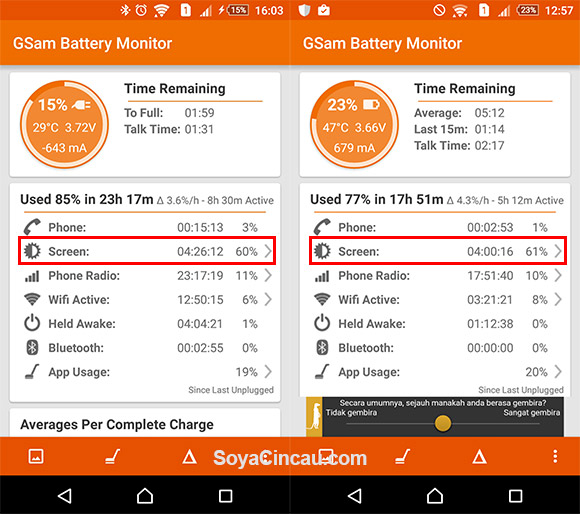
Battery-wise, there’s a 2,900 mAh capacity lithium cell and on a full charge, you can expect a light-medium user to get four to five hours of screen-on-time. It’ll creep in just under 24 hours in terms of overall battery life. That’s without any stamina modes mind you, by our records – not matching their claim of 48-hours but by the average flagship, slightly better.
Charging times through its micro USB 2.0 slot will be slow because you’re stuck with a lowly 1.5amp charging head. Below is the breakdown of how long it took to charge the Sony Xperia Z5 Dual:
The parameters were – WiFi ON, mobile network ON and data OFF.Starting from 15%10 minutes – 20%20 minutes – 28%30 minutes – 35%40 minutes -42%50 minutes – 51%1 hour – 59%1h 10m – 67%1h 20m – 75%1h 30m – 82%1h 40m – 88%1h 50m – 93%2 hours – 96%2h 36m – 100%
Rounding off, it has a Dual-SIM 4G LTE slot, together with support for a microSD card. There’s also NFC, Bluetooth 4.1, an FM tuner, GPS and a fingerprint sensor (we’ll talk about how it worked in the usability section).
Now on to the camera section!
[nextpage title=”Best camera on a smartphone?”]
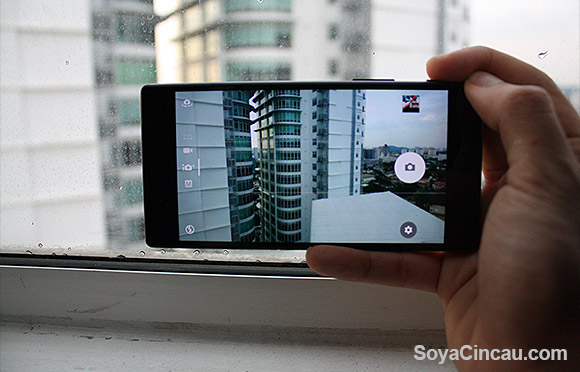
Sony’s latest and greatest (as said by some) is now in the form of a 23-megapixel rear shutter and a 5.1-megapixel front sensor. Again we’re going to talk about how the amount pixels isn’t the only determining factor, it helps but, in the end, it’ll boil down to the smartphone’s imaging software and the skills of the photographer.
DxOMark rates it highly but we’re sure you’ve seen our camera comparison. If you haven’t here are some samples:
Note: Please click on the images to view the full resolution
23-megapixel images shot in manual mode with HDR
8-megapixel shots in superior auto mode
5-megapixel shot in superior auto mode (front camera)
The rear camera has an aperture of f/2.0 with a pixel size of 1.12 µm and a 24mm wide-angle G lens that’s helped by a single LED flash. You can also choose to shoot in HDR if you want your images to have a better overall exposure.
It takes photos with quick focus, claimed to be 0.03 seconds through its PDAF technology but the image processing takes a bit too long for our liking. You’ll like the two-stage camera button, it really comes in handy.
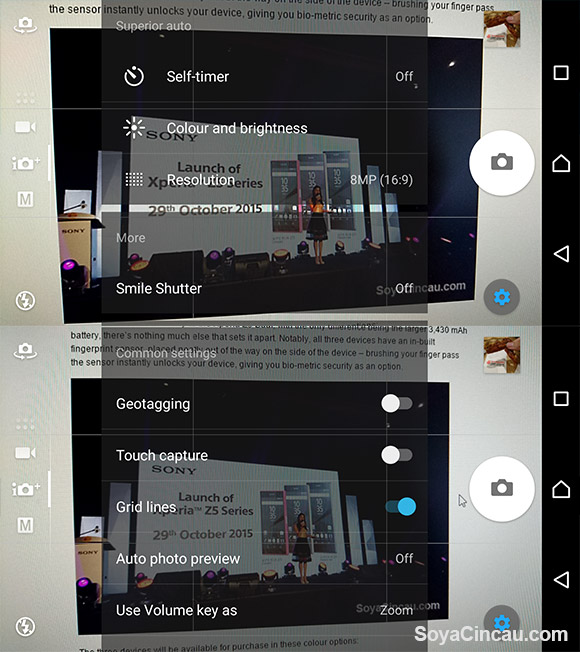
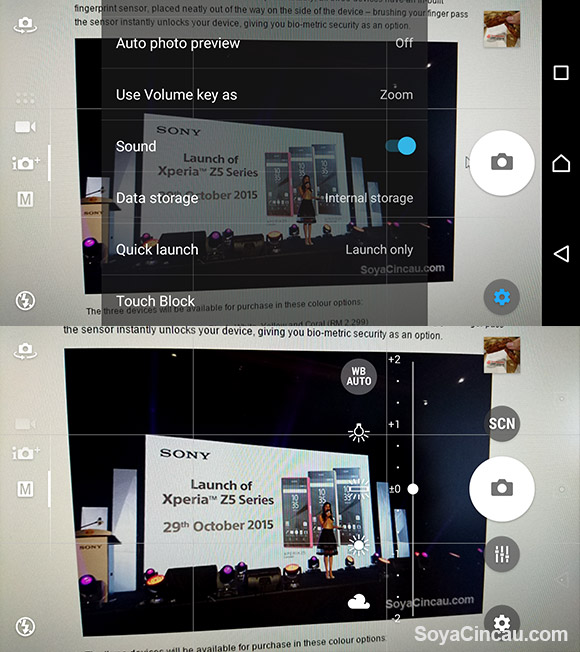
The interface is easy to get around while there are options to shoot in superior auto mode or manual. Digging into the latter, lets you tweak a lot of settings: white balance, ISO, HDR, image resolution, focus modes and the type of scenes you’re capturing.
Both cameras when shooting images were often showing a greenish tint and often failed to amaze us (sorry DxOMark). Making us think that it isn’t all it’s cracked up to be and Sony still has a lot to do in the image processing department despite making great sensors used by other OEMs.
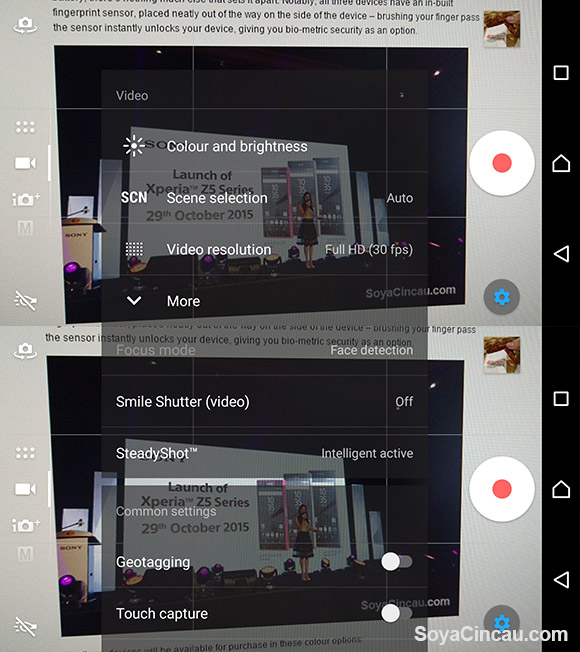
Looking at the video capabilities, we were a little more impressed. Its rear lens is capable of shooting in 4K resolution and while the quality isn’t close to a proper video camera, the SteadyShot stabilisation was crazy good.
In the options depending what resolution you’re shooting in you can enable two stages of SteadyShot, standard or Intelligent active. The latter works harder to maintain jitter free recording.
For slow-mo recording, the Xperia Z5 Dual enables you to shoot Ultra HD videos at 30fps for the main camera, and for the front, 1080p videos at the same 30fps.
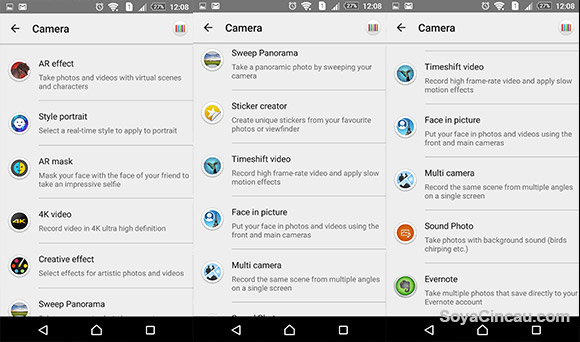
While, in video mode, there’s settings for colour and brightness, video resolution, SteadyShot settings, and etc. Sony always goes overboard when it comes to adding secondary apps to help one edit their images and video. You’ll find this useful depending on how much you bother with your photos and video.
Here are some videos showing off how well it performed while shooting in 4K:
You can view the full video comparison here.
[nextpage title=”A second-run at Sony’s UI”]
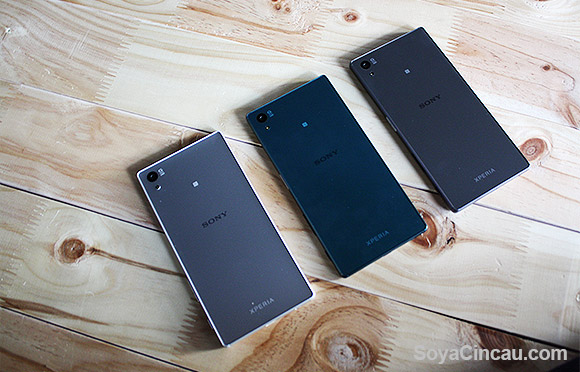
This was my second rodeo with a Sony device, so I knew roughly what to expect before jumping into the pit. You can’t compare a mid-ranger with a flagship device but at least, I knew there was a recent impression of this brand that I would rely on.
Okay, enough backstory. I’ve said this before and I’ll say it again – whenever I pick up a Sony smartphone, I feel like I’m using a smaller PlayStation – that’s more of how it looks but you can change all that pretty quickly. Once it looked acceptable, the value of a flagship device started to show.
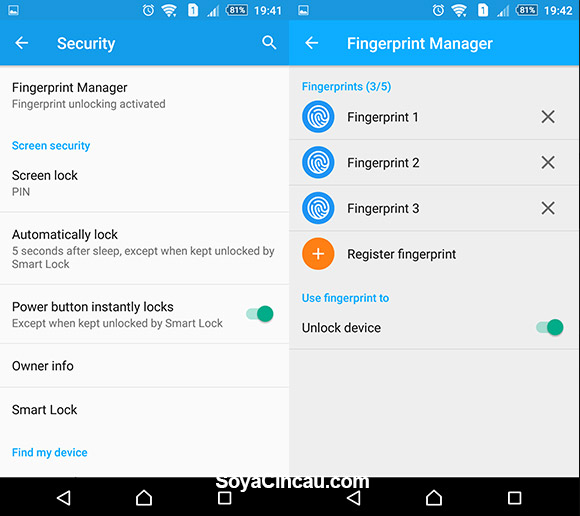
A big first for Sony would be putting a fingerprint sensor on their device. The power button also acts as this sensor and being quite particular with security (as would anyone) the initiation of the biometric security began. Those with sweaty hands are going to hate this sensor with passion – especially while setting up. Being right handed, the best way to utilise the sensor would be to use your thumb to activate it. The process takes a while and the scanner takes its time to thoroughly scan your finger(s).
It takes a lot for it to work and there were times when giving up was a thought in my head. Definitely a hit or miss due to two (possible) reasons: one, Sony still hasn’t grasped the whole fingerprint sensor technology yet; two, the small surface area because it’s placed on the side makes it harder to detect prints.
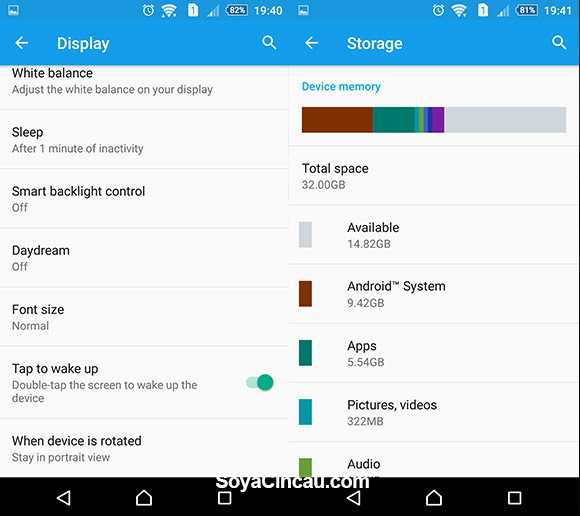
Coming from a Nexus 6P, you learn to appreciate what OEMs decide to put on their devices or notice what’s weirdly missing from the Vanilla operating system. You’ll have to know one thing about having a double tap feature on this device – it will go off in your pocket without having any fingers near it. Detecting touches and eventually leading you to hear dial tones while walking. I lived with it but it was annoying.
Sony keeps their UI looking much the same from my past experience. On their flagships they do, however, add more flagship apps aka bloatware. It never appealed to me but we suggest you take a look inside at least once.
The tailored discounts/deals/experience app in the Xperia Lounge are still there but since the Xperia Z5 Dual is a flagship, it’ll get the “gold membership” experience in the app.
Sony says that this is the ultimate VIP treatment, reserving special apps, themes, and events for you. After purchasing the Xperia Z5 Dual, going into the Xperia Lounge will allow you to download three Sony production movies.
While the intrusive Movie Creator app is back to riddle you with many annoying notifications.
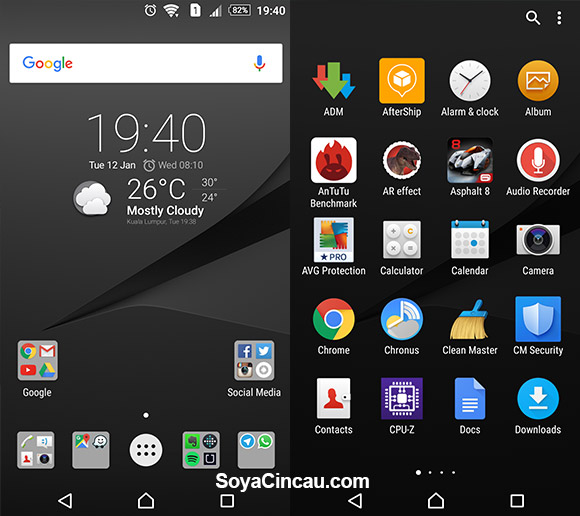
Telephone and messaging apps worked as per usual and navigating around the Sony skin never annoyed me one bit. Calls were never dropped and my cellular network performed like it always would.
What we can’t wait for is Sony finally releasing their concept for Marshmallow, that really looked good and won’t have any resemblance to PlayStation’s UI either. You can take a look at it here.
[nextpage title=”Conclusion”]
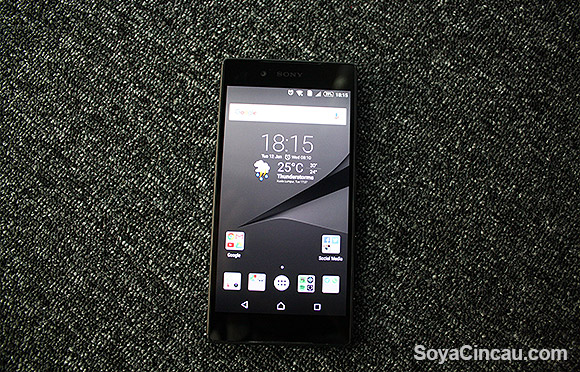
Sony’s Xperia Z5 a lot like the Z3+ except for that frosted glass. It’s still squarish/omniblance-like, it’s still waterproof and it’s still a smartphone that has a battery capable of going the distance.
The Japanese manufacturer has milked the design to its bones – both on the outside and the inside. We hope to see something game-changing from Sony in this year on the surface and inside.
So if you like how they look, then by all means go with the Sony but be aware of the hard to please fingerprint sensor and green-ish photos that it takes – maybe in terms of the camera it’s just our unit. But you can read about many users experiencing the same fingerprint woes by searching on Xperia forums.
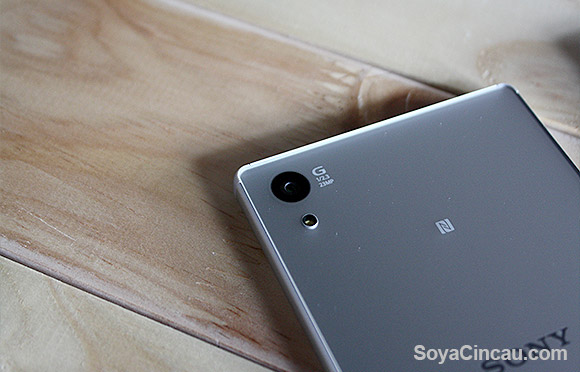
The camera isn’t all bad, you’ll come to love the SteadyShot feature if you’re always recording videos, underwater (at your own discretion) or on the surface – it doesn’t matter, the Sony will do both.
We could see more people picking up the Xperia Z5 Dual compared to their older flagships – mainly because of how it looks and feels – more premium and that frosted glass is something we really like.
Light to medium users won’t need to carry around a power brick throughout their workdays and that’s without using Stamina Mode. They’ve always been known for a good (real-life scenario) battery life anyway but without using the added Stamina Mode(s), we don’t see how this could last up to 2-days on a single charge – as claimed by Sony.
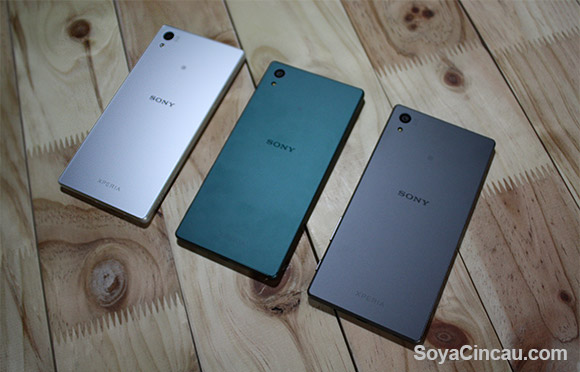
I can’t say that the device didn’t grow on me. There was more good than bad this time but I still can’t see myself buying this for RM 2,699 (w/ GST) even if it comes in four colours: Graphite Black, White, Gold and Green. At this flagship price, there are other options out there – the Nexus 6P and the Samsung Note5 are very obvious choices.
Take it this way, soon most smartphones are going to carry the same Ingress Protection rating as them and then Sony will be stuck in a corner. What else do they have to offer? Their camera is average when compared to flagships, the looks are relatively dated, the fingerprint sensor isn’t great, and it often gets hot.
Sony has to build themselves from the ground up and take it back to the drawing board if they don’t, Sony Mobile might not put up a fight in the intense battle of the smartphone world.

